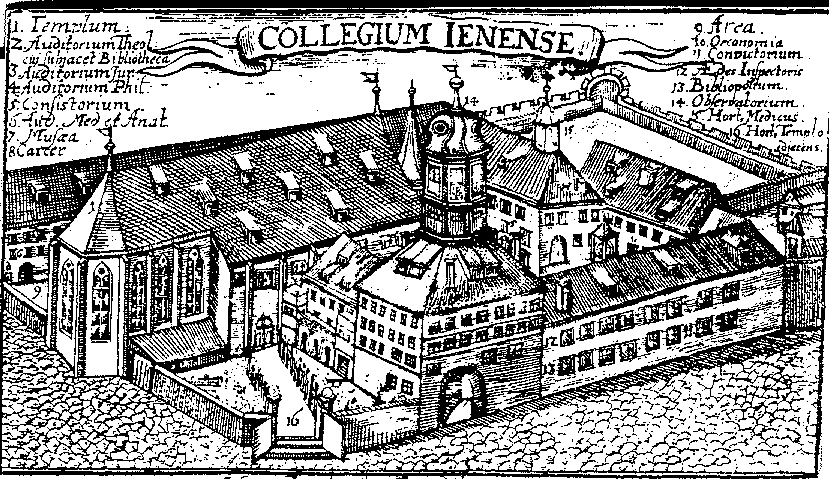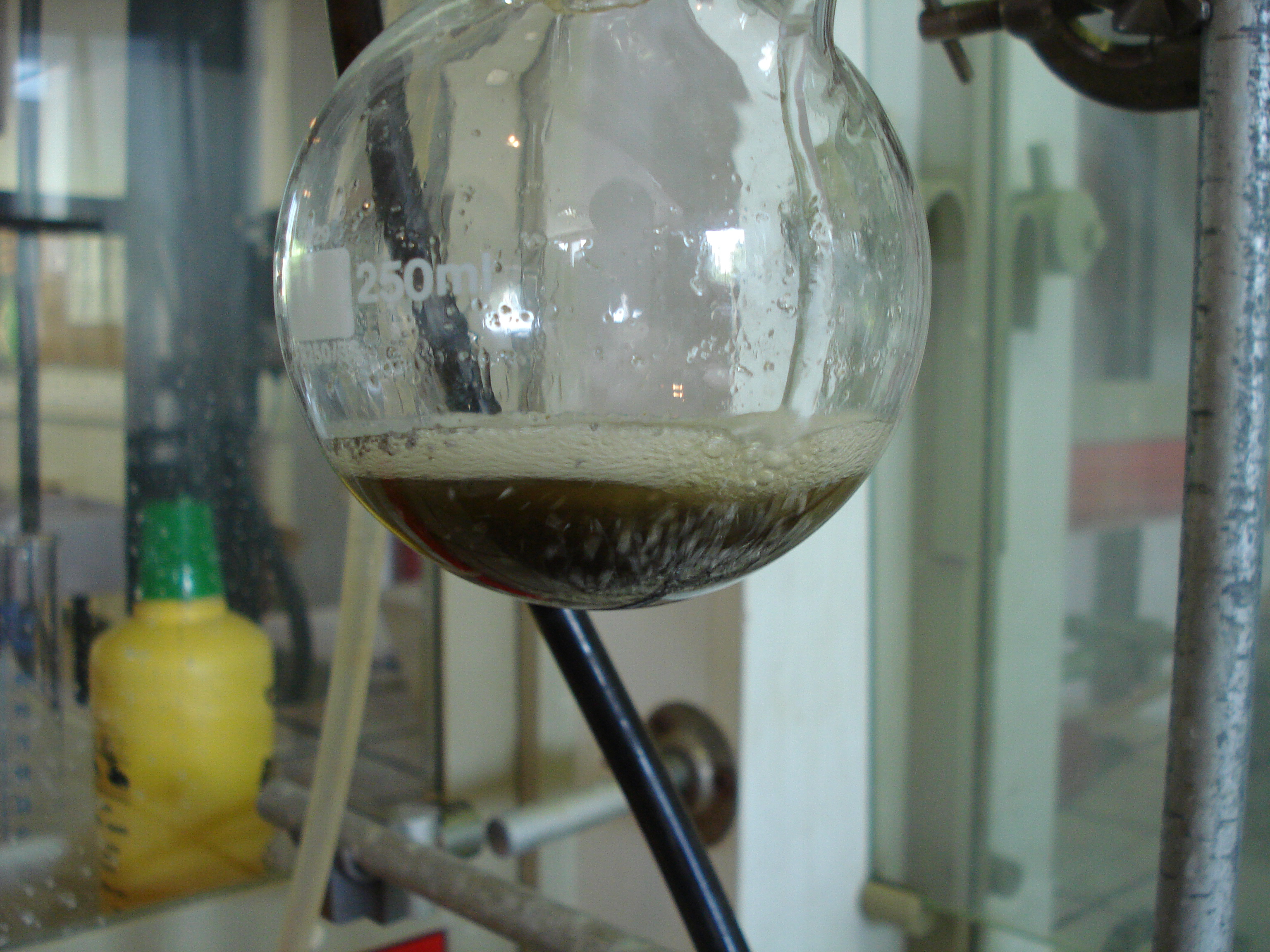|
Franz Hein
Franz Hein (30 June 1892 – 26 February 1976) was a German chemist and professor. He specialized in the chemistry of organic chromium and other metal compounds. He was the son of the artist Franz Johann Erich Hein (1863–1927). History Franz Hein was born in Grötzingen (Baden), Germany. His high school years were spent in Leipzig, where his father Franz Johann Erich Hein (1863–1927) was an artist and teacher. He then went to the University of Leipzig in 1912. Hein completed his Ph.D. in 1917 under Arthur Hantzsch (1857-1935) on optical studies of bismuth and triphenylmethane derivatives. Hein made ''Assistant'' at the university and in 1920 ''Oberassistent''. He continued working on his ''Habilitation'' becoming a professor in 1923. With the completion of his ''Habilitation'', Hein went to work on organometallic system electrochemistry. In 1933, Hein signed the ''Vow of allegiance of the Professors of the German Universities and High-Schools to Adolf Hitler and the National S ... [...More Info...] [...Related Items...] OR: [Wikipedia] [Google] [Baidu] |
Grötzingen
Grötzingen is a district in Karlsruhe, Germany Germany, officially the Federal Republic of Germany, is a country in Central Europe. It lies between the Baltic Sea and the North Sea to the north and the Alps to the south. Its sixteen States of Germany, constituent states have a total popu .... On December 31, 2020, it had a population of 9,156. It contains the Augustenburg Castle church and the Grötzingen Jewish Cemetery. Pfinztal lies just to the southeast. The district is further divided into ''Nördlich der Pfinz'' and ''Südlich der Pfinz''. References {{DEFAULTSORT:Grotzingen ... [...More Info...] [...Related Items...] OR: [Wikipedia] [Google] [Baidu] |
University Of Jena
The University of Jena, officially the Friedrich Schiller University Jena (, abbreviated FSU, shortened form ''Uni Jena''), is a public research university located in Jena, Thuringia, Germany. The university was established in 1558 and is counted among the ten oldest universities in Germany. It is affiliated with six Nobel Prize winners, most recently in 2000 when Jena graduate Herbert Kroemer won the Nobel Prize for physics. It was renamed after the poet Friedrich Schiller who was teaching as professor of philosophy when Jena attracted some of the most influential minds at the turn of the 19th century. With Karl Leonhard Reinhold, Johann Gottlieb Fichte, G. W. F. Hegel, F. W. J. Schelling and Friedrich Schlegel on its teaching staff, the university was at the centre of the emergence of German idealism and early Romanticism. , the university has around 19,000 students enrolled and 375 professors. Its current president, Walter Rosenthal, has held the role since 2014. Hi ... [...More Info...] [...Related Items...] OR: [Wikipedia] [Google] [Baidu] |
1892 Births
In Samoa, this was the only leap year spanned to 367 days as July 4 repeated. This means that the International Date Line was drawn from the east of the country to go west. Events January * January 1 – Ellis Island begins processing Immigration to the United States, immigrants to the United States. February * February 27 – Rudolf Diesel applies for a patent, on his compression ignition engine (the Diesel engine). * February 29 – St. Petersburg, Florida is incorporated as a town. March * March 1 – Theodoros Deligiannis ends his term as Prime Minister of Greece and Konstantinos Konstantopoulos takes office. * March 6–March 8, 8 – "Exclusive Agreement": Rulers of the Trucial States (Abu Dhabi, Dubai, Sharjah, Ajman, Ras al-Khaimah and Umm al-Quwain) sign an agreement, by which they become ''de facto'' British protectorates. * March 11 – The first basketball game is played in public, between students and faculty at the Springfield YMCA before 200 spectators. The ... [...More Info...] [...Related Items...] OR: [Wikipedia] [Google] [Baidu] |
Scientists From Karlsruhe
A scientist is a person who researches to advance knowledge in an area of the natural sciences. In classical antiquity, there was no real ancient analog of a modern scientist. Instead, philosophers engaged in the philosophical study of nature called natural philosophy, a precursor of natural science. Though Thales ( 624–545 BC) was arguably the first scientist for describing how cosmic events may be seen as natural, not necessarily caused by gods,Frank N. Magill''The Ancient World: Dictionary of World Biography'', Volume 1 Routledge, 2003 it was not until the 19th century that the term ''scientist'' came into regular use after it was coined by the theologian, philosopher, and historian of science William Whewell in 1833. History The roles of "scientists", and their predecessors before the emergence of modern scientific disciplines, have evolved considerably over time. Scientists of different eras (and before them, natural philosophers, mathematicians, natur ... [...More Info...] [...Related Items...] OR: [Wikipedia] [Google] [Baidu] |
Bis(benzene)chromium
Bis(benzene)chromium is the organometallic compound with the formula . It is sometimes called dibenzenechromium. The compound played an important role in the development of sandwich compounds in organometallic chemistry and is the prototypical complex containing two arene ligands. Historical background In the late 1910s, Franz Hein started the investigation of "triphenylchromium" by reacting chromium trichloride with a Grignard reagent, phenyl magnesium bromide. Such a reaction gave a mixture of phenyl chromium and Hein suggested that it contained a Cr(VI) species, "", generated via valence disproportionation. : This event marked an advance in organochromium chemistry at the time and "" was described to have salt-like properties. However, the reported workup procedures for "" was challenging and the yield was low. Later scrutinization by Zeiss and Tsutsui revealed that Hein's formulation of the chromium-containing products was flawed. Preparation The actual discovery of bis( ... [...More Info...] [...Related Items...] OR: [Wikipedia] [Google] [Baidu] |
Ferrocene
Ferrocene is an organometallic chemistry, organometallic compound with the formula . The molecule is a Cyclopentadienyl complex, complex consisting of two Cyclopentadienyl anion, cyclopentadienyl rings sandwiching a central iron atom. It is an orange solid with a camphor-like odor that Sublimation (phase transition), sublimes above room temperature, and is soluble in most organic solvents. It is remarkable for its stability: it is unaffected by air, water, strong bases, and can be heated to 400 °C without decomposition. In oxidizing conditions it can reversibly react with strong acids to form the ferrocenium cation . Ferrocene and the ferrocenium cation are sometimes abbreviated as Fc and respectively. The first reported synthesis of ferrocene was in 1951. Its unusual stability puzzled chemists, and required the development of new theory to explain its formation and bonding. The discovery of ferrocene and its many Structural analog, analogues, known as metallocenes, sparke ... [...More Info...] [...Related Items...] OR: [Wikipedia] [Google] [Baidu] |
Sandwich Compound
In organometallic chemistry, a sandwich compound is a chemical compound featuring a metal bound by hapticity, haptic, covalent bonds to two arene compound, arene (ring) ligands. The arenes have the formula , substituted derivatives (for example ) and heterocycle, heterocyclic derivatives (for example ). Because the metal is usually situated between the two rings, it is said to be "sandwiched". A special class of sandwich complexes are the metallocenes. The term ''sandwich compound'' was introduced in organometallic nomenclature in 1956 in a report by J. D. Dunitz, L. E. Orgel and R. A. Rich, who confirmed the structure of ferrocene by X-ray crystallography. The correct structure, in which the molecule features an iron atom ''sandwiched'' between two parallel cyclopentadienyl rings, had been proposed several years previously by Robert Burns Woodward and, separately, by Ernst Otto Fischer. The structure helped explain puzzles about ferrocene's conformational isomer ... [...More Info...] [...Related Items...] OR: [Wikipedia] [Google] [Baidu] |
Chem , a place in Finland
{{disambig ...
Chem may refer to: *Chemistry *Chemical * ''Chem'' (journal), a scientific journal published by Cell Press *Post apocalyptic slang for "drugs", medicinal or otherwise in the Fallout video game series. In Ancient Egyptian usage: * ''Khem'' (also spelt ''Chem''), the Egyptian word for "black" *Min (god), in the past erroneously named ''Khem'' CHEM may refer to : *A metabolic panel: for instance, CHEM-7, which is the basic metabolic panel * CHEM-DT, a Canadian television channel See also * Chemo (other) * Kem (other) *Kemi Kemi (; ; ; ) is a cities of Finland, town and municipalities of Finland, municipality of Finland. It is located approximately from the city of Tornio and the Finland–Sweden border, Swedish border. The distance to Oulu is to the south and t ... [...More Info...] [...Related Items...] OR: [Wikipedia] [Google] [Baidu] |
Phenylmagnesium Bromide
Phenylmagnesium bromide, with the simplified formula , is a magnesium-containing organometallic compound. It forms colorless crystals. It is commercially available as a solution in diethyl ether or tetrahydrofuran (THF). Phenylmagnesium bromide is a Grignard reagent. It is often used as a synthetic equivalent for the phenyl "Ph−" synthon. Preparation Phenylmagnesium bromide is commercially available as solutions of diethyl ether or THF. Laboratory preparation involves treating bromobenzene with magnesium metal, usually in the form of turnings. A small amount of iodine may be used to activate the magnesium to initiate the reaction. Coordinating solvents such as ether or THF, are required to solvate (complex) the magnesium(II) center. The solvent must be aprotic since alcohols and water contain an acidic proton and thus react with phenylmagnesium bromide to give benzene. Carbonyl-containing solvents, such as acetone and ethyl acetate, are also incompatible with the reagent. ... [...More Info...] [...Related Items...] OR: [Wikipedia] [Google] [Baidu] |
Chromium(III) Chloride
Chromium(III) chloride (also called chromic chloride) is an inorganic chemical compound with the chemical formula . This crystalline salt forms several hydrates with the formula , among which are hydrates where ''n'' can be 5 (chromium(III) chloride pentahydrate ) or 6 (chromium(III) chloride hexahydrate ). The anhydrous compound with the formula are violet crystals, while the most common form of the chromium(III) chloride are the dark green crystals of hexahydrate, . Chromium chlorides find use as catalysts and as precursors to dyes for wool. Structure Anhydrous chromium(III) chloride adopts the structure, with occupying one third of the octahedral interstices in alternating layers of a pseudo- cubic close packed lattice of ions. The absence of cations in alternate layers leads to weak bonding between adjacent layers. For this reason, crystals of cleave easily along the planes between layers, which results in the flaky (micaceous) appearance of samples of chromium(III) ... [...More Info...] [...Related Items...] OR: [Wikipedia] [Google] [Baidu] |
Vow Of Allegiance Of The Professors Of The German Universities And High-Schools To Adolf Hitler And The National Socialistic State
officially translated into English as the Vow of allegiance of the Professors of the German Universities and High-Schools to Adolf Hitler and the National Socialistic State was a document presented on 11 November 1933 at the Albert Hall in Leipzig. It had statements in German, English, Italian, and Spanish by selected German academics and included an appendix of signatories. The purge to remove academics and civil servants with Jewish ancestry began with the Law for the Restoration of the Professional Civil Service, passed on 7 April 1933. The vow of allegiance was signed by those who remained, in support of Nazi Germany. Philosopher Martin Heidegger in his inaugural lecture in May 1933 as rector (academia), rector of the University of Freiburg, and who was later in October appointed "Führer of the university", said (translated): "The much celebrated "academic freedom" is being banished from the German university; for this freedom was not genuine, since it was only negative. It m ... [...More Info...] [...Related Items...] OR: [Wikipedia] [Google] [Baidu] |







